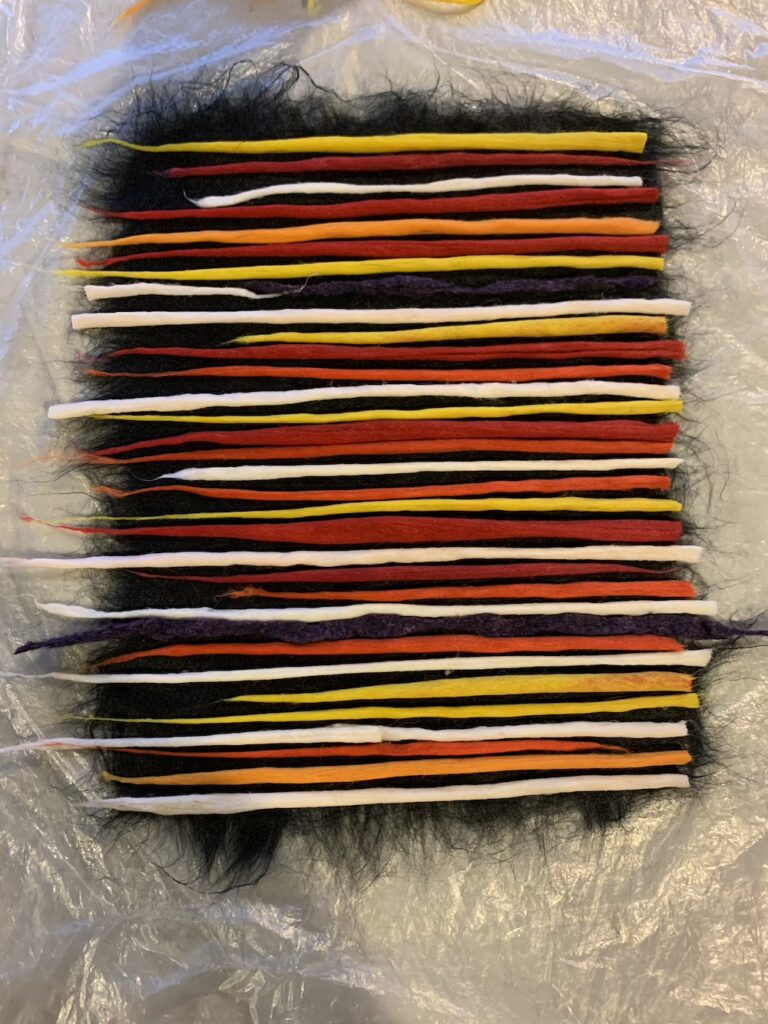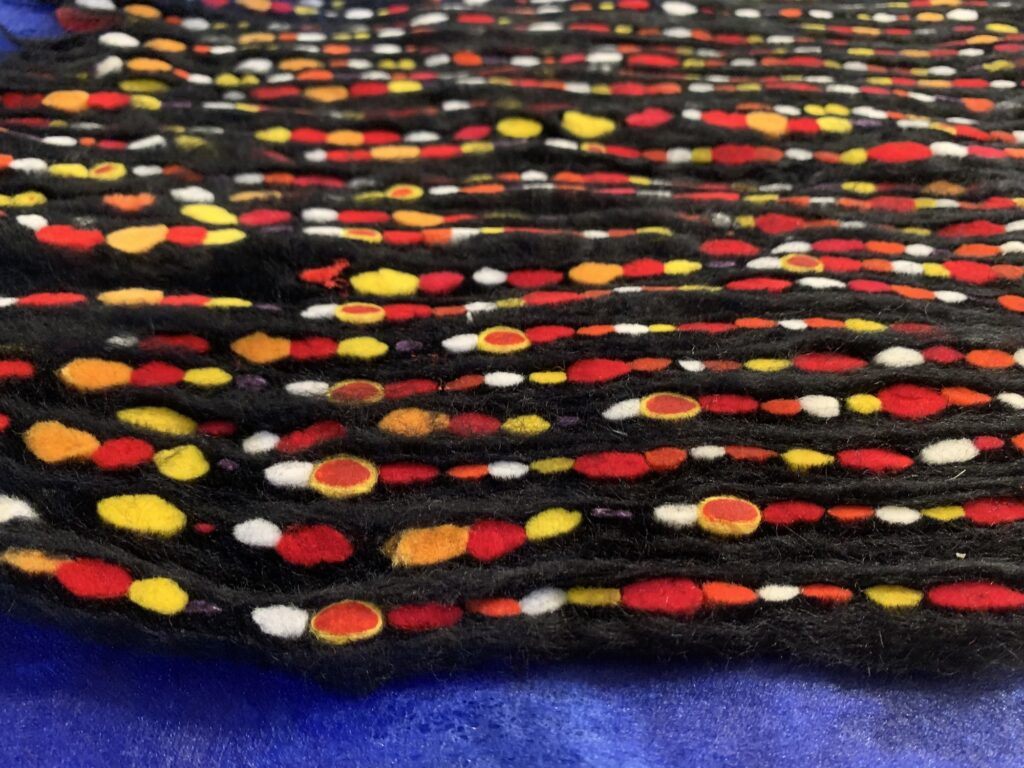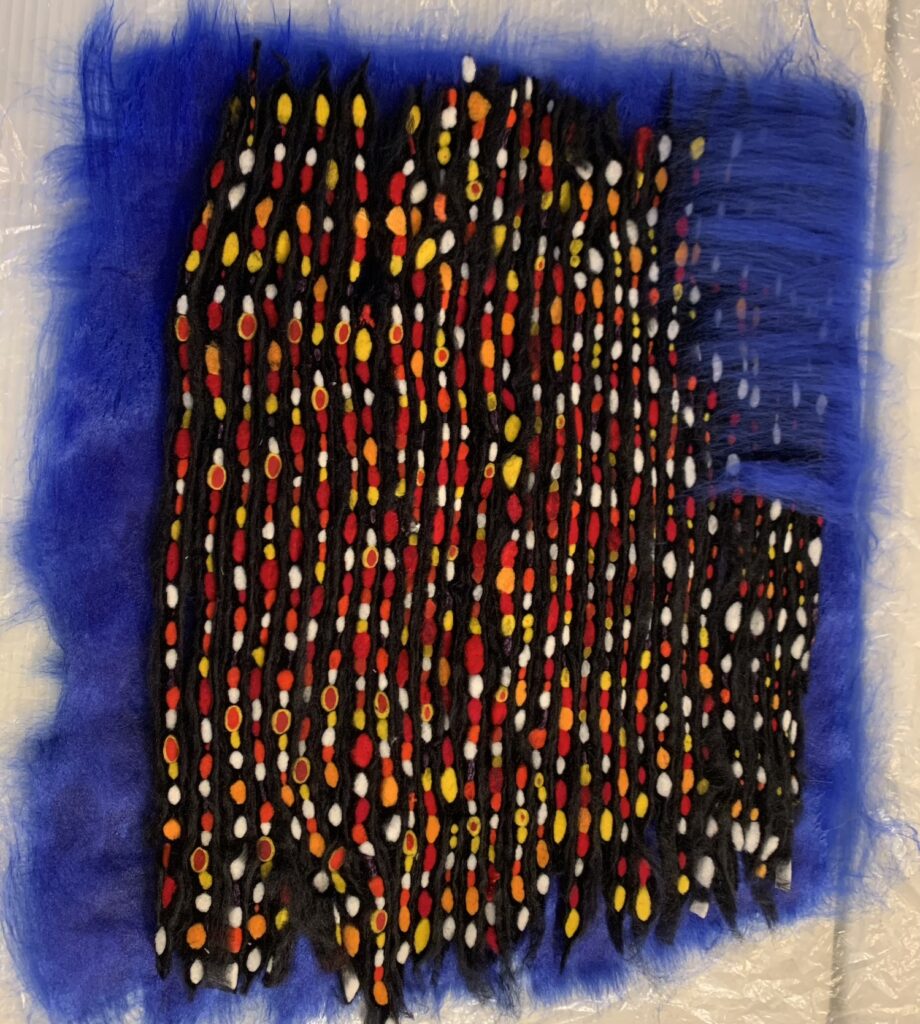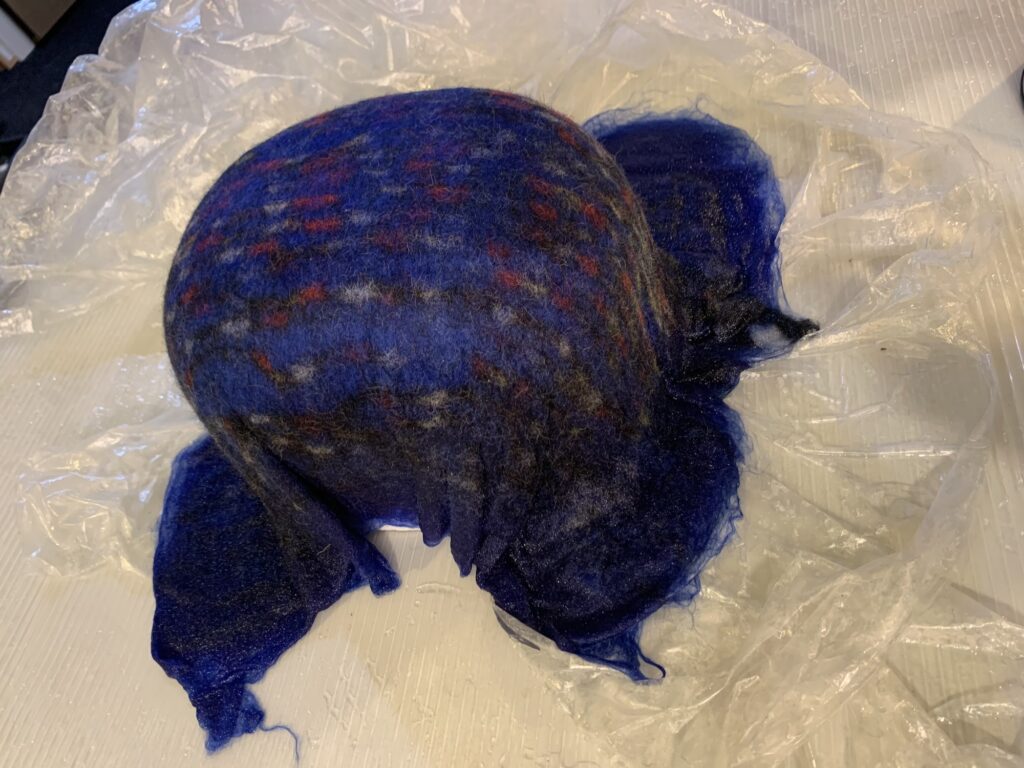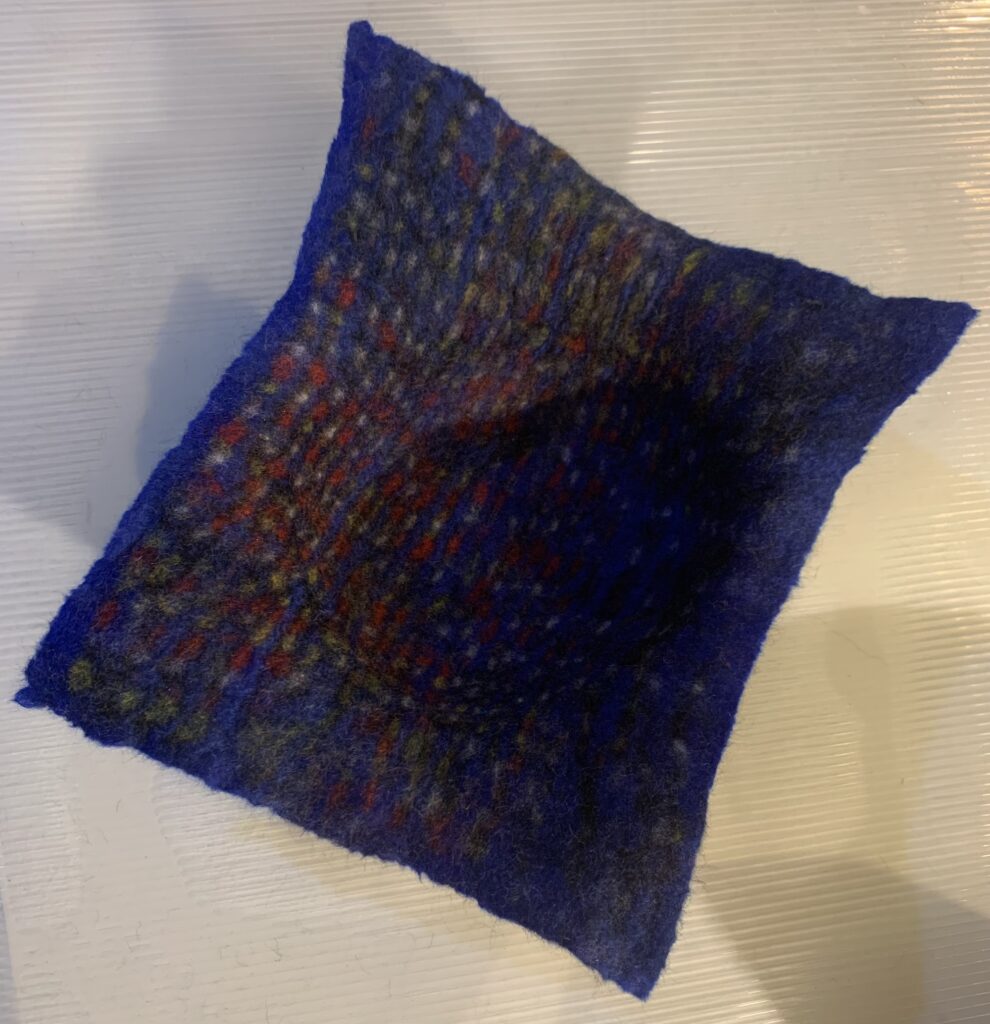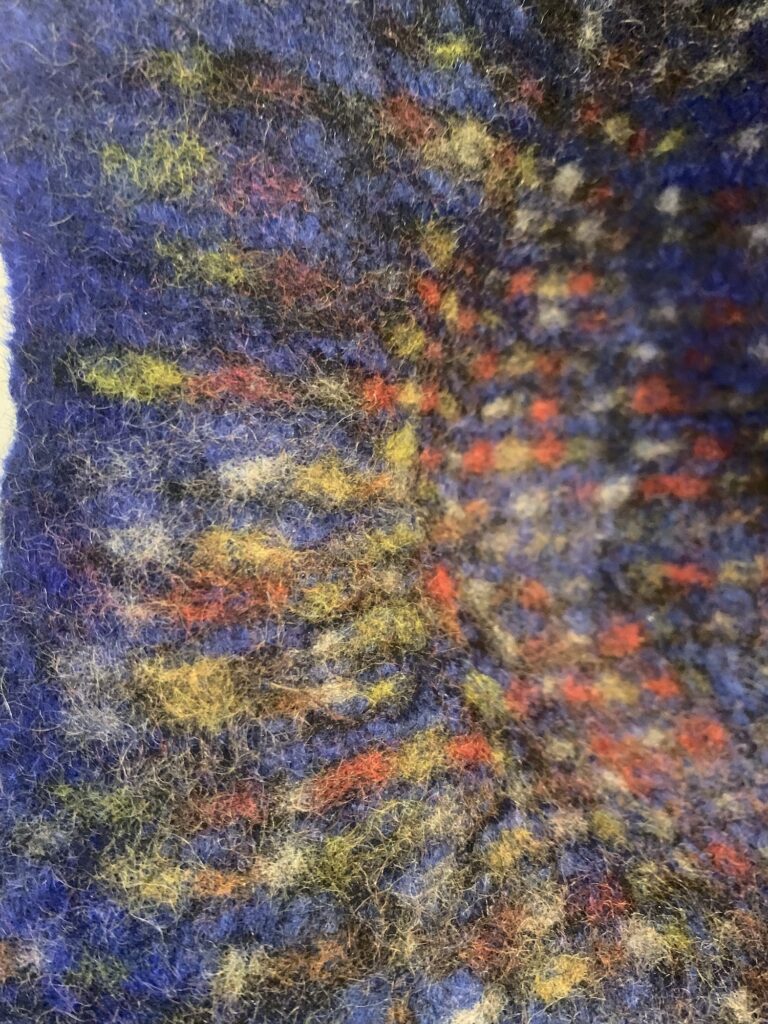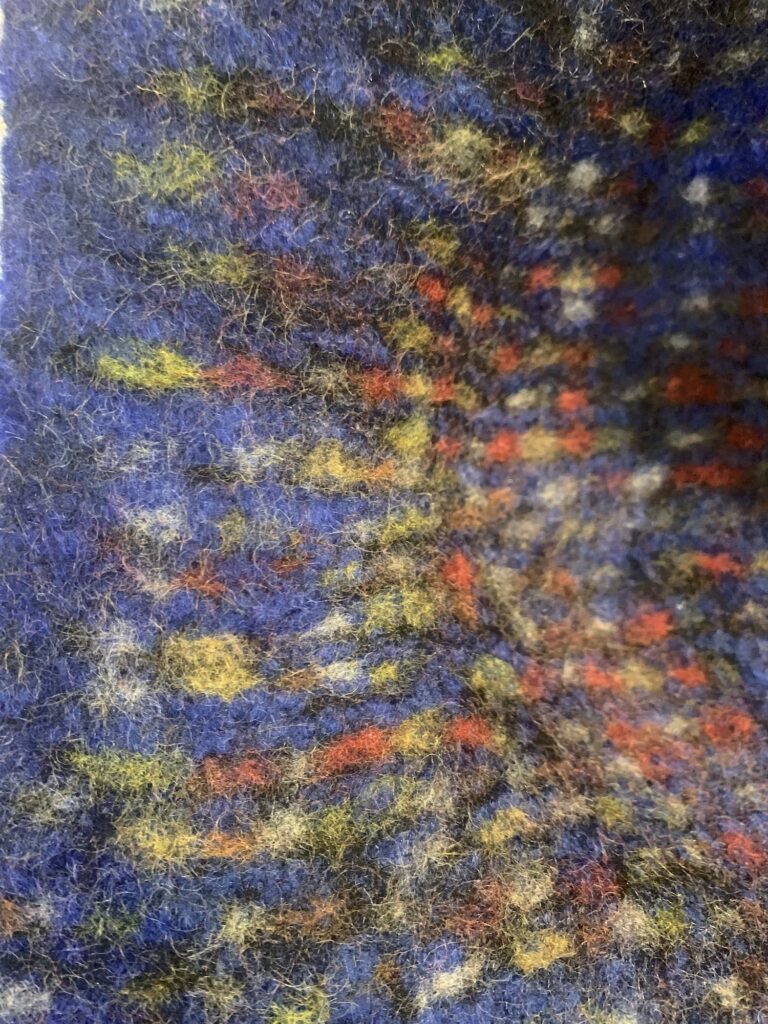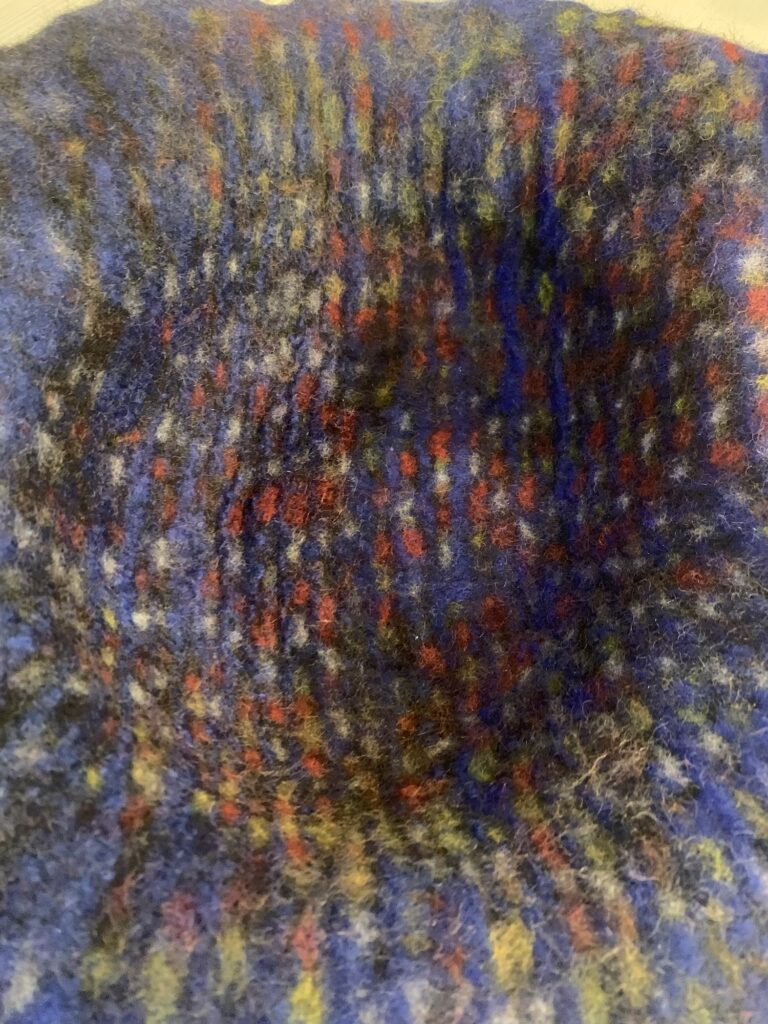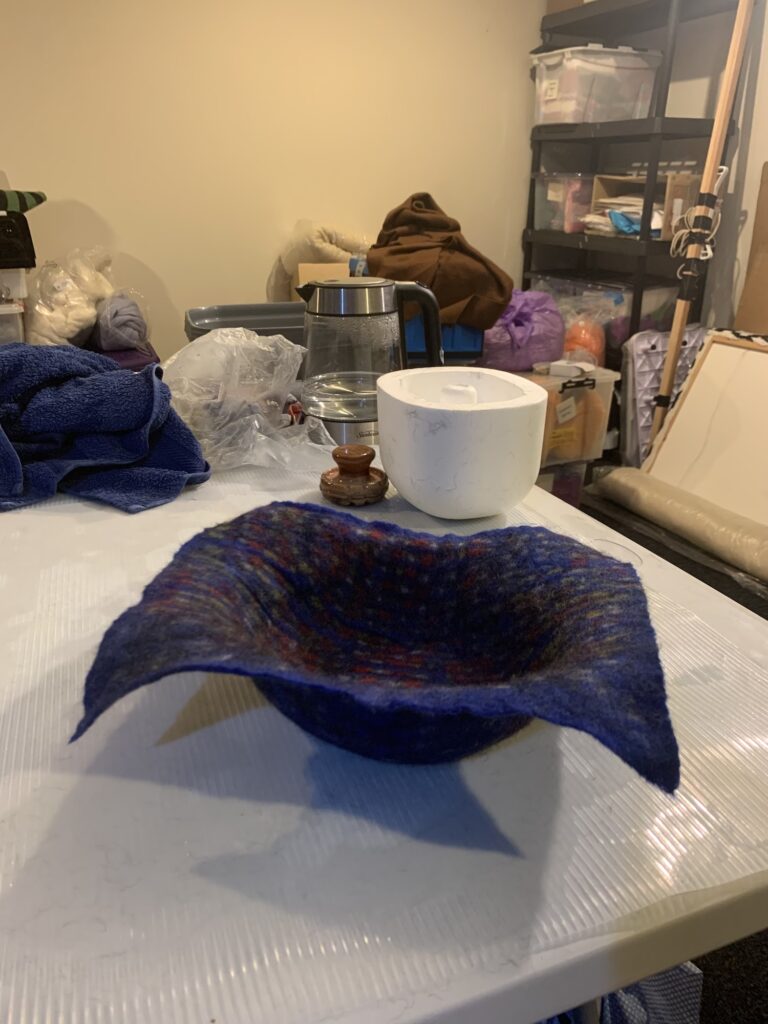Since we moved to our new home in May we have been steadily adorning the walls with the pieces of art that moved with us, as we were deciding what to hang where, Mr TB pointed out that more than half of the art work on our walls is made from wool. I couldn’t disagree but still felt compelled to make a new piece to hang in the hallway, opposite the front door. Something colourful and cheery to greet any visitors. Much to my surprise, instead of complaining that we have too much wool on the walls, Mr TB helped me hang it.
I really wanted to play with a piece of silk purchased at Fibretron (a fibre festival in Hamilton, NZ), it has this wonderful wavy texture and can be peeled into fine sheets a little like silk hankies. I used some to decorate a large sheet of felt, layering and blending different colours as I went.
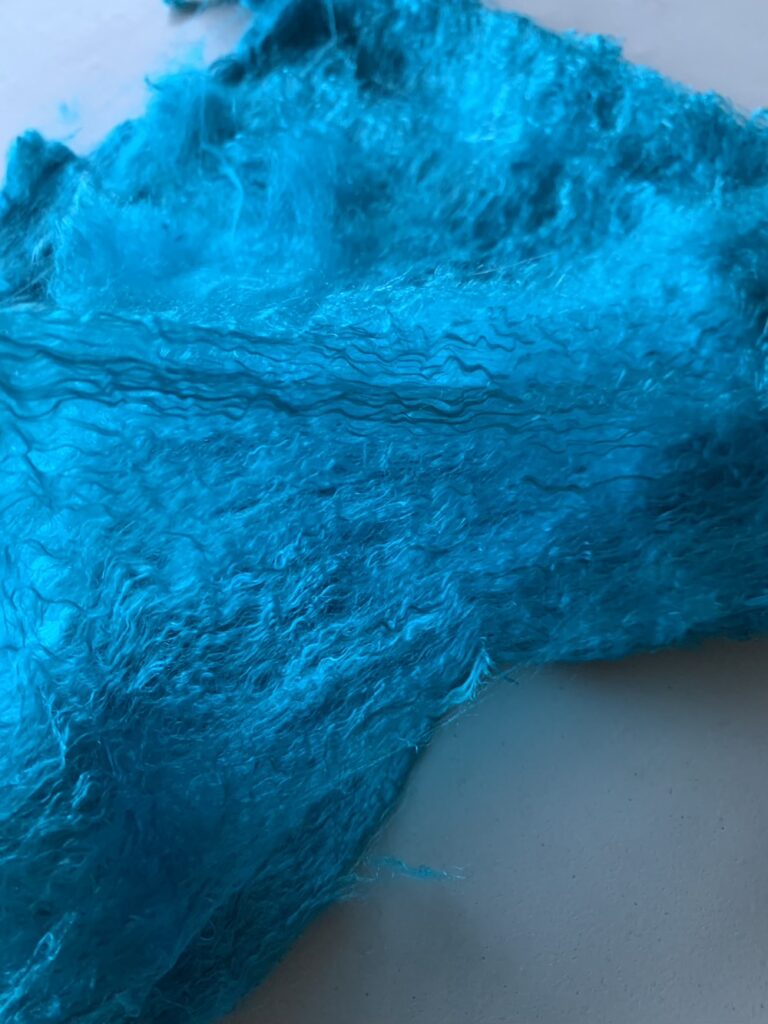
Once felted, I cut up the sheet into large petal shapes and continued felting them while shaping and blocking them, before laying them out to find an appealing arrangement.
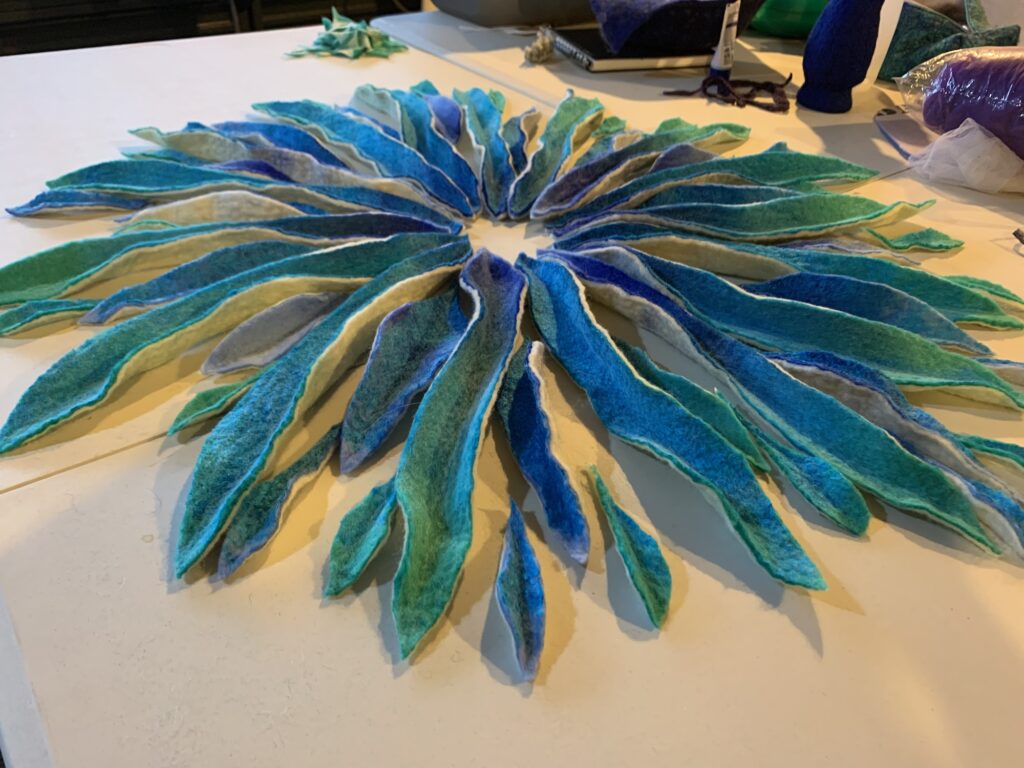
At this stage I felt like the centre really needed something, a complimentary colour perhaps? So I had a play with some different colours…
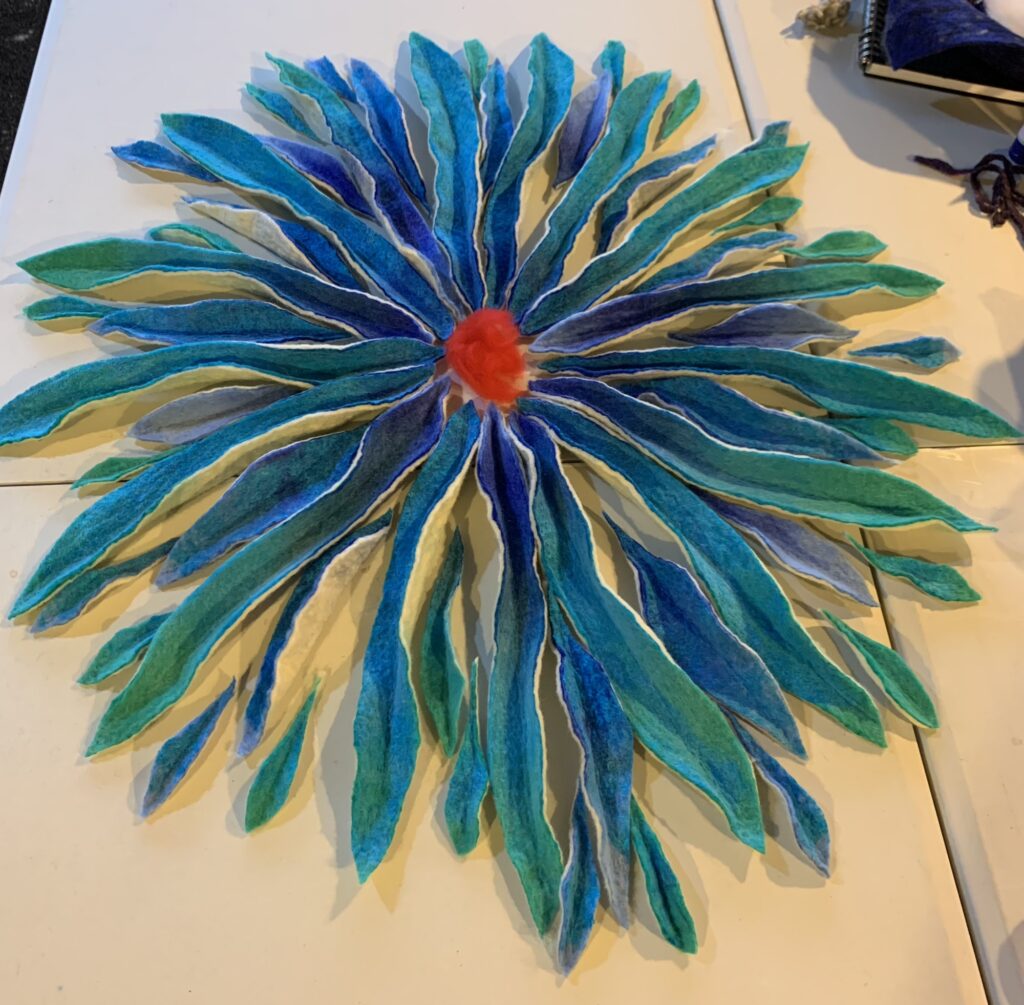
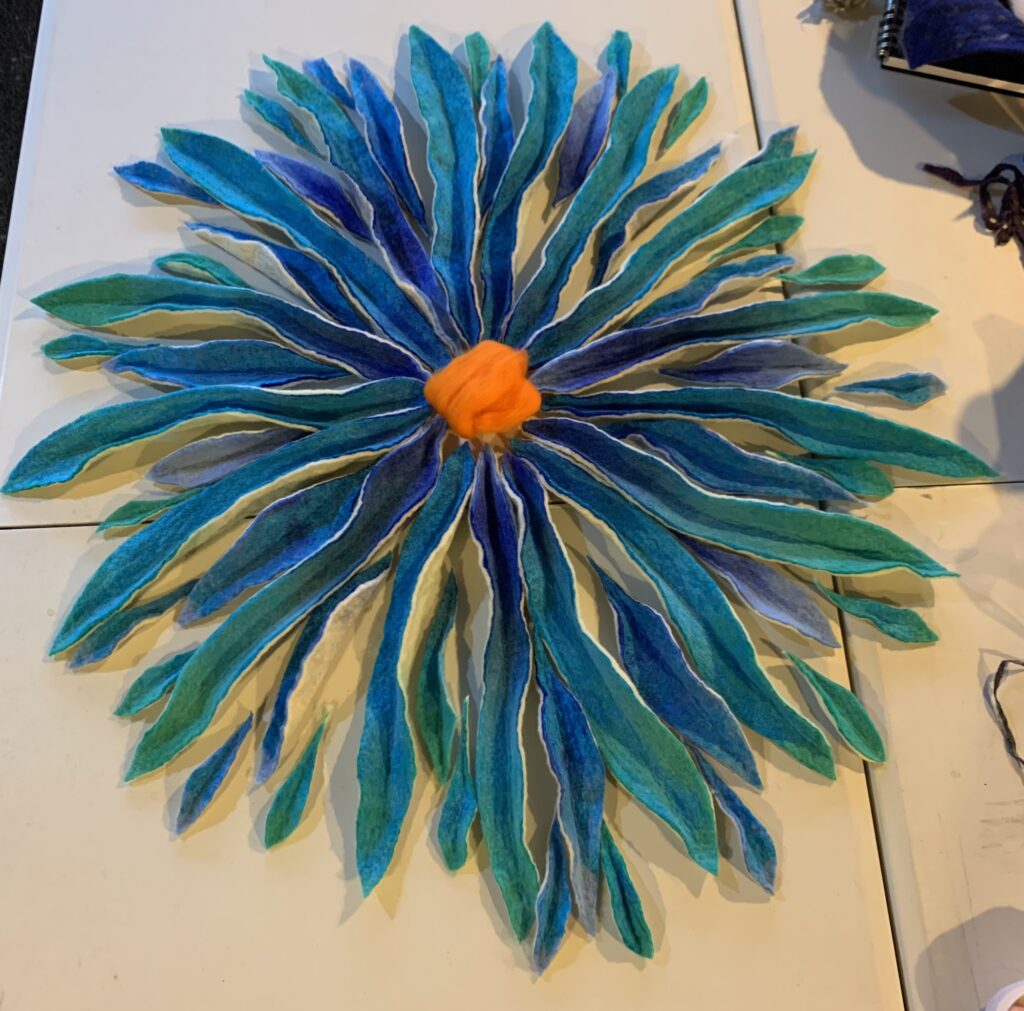
But they didn’t quite feel right.
I have recently been playing with making different sculptural flower shapes and had one sitting on my bench. This looked much better, this is the piece after I had started gluing and sewing the petals together:
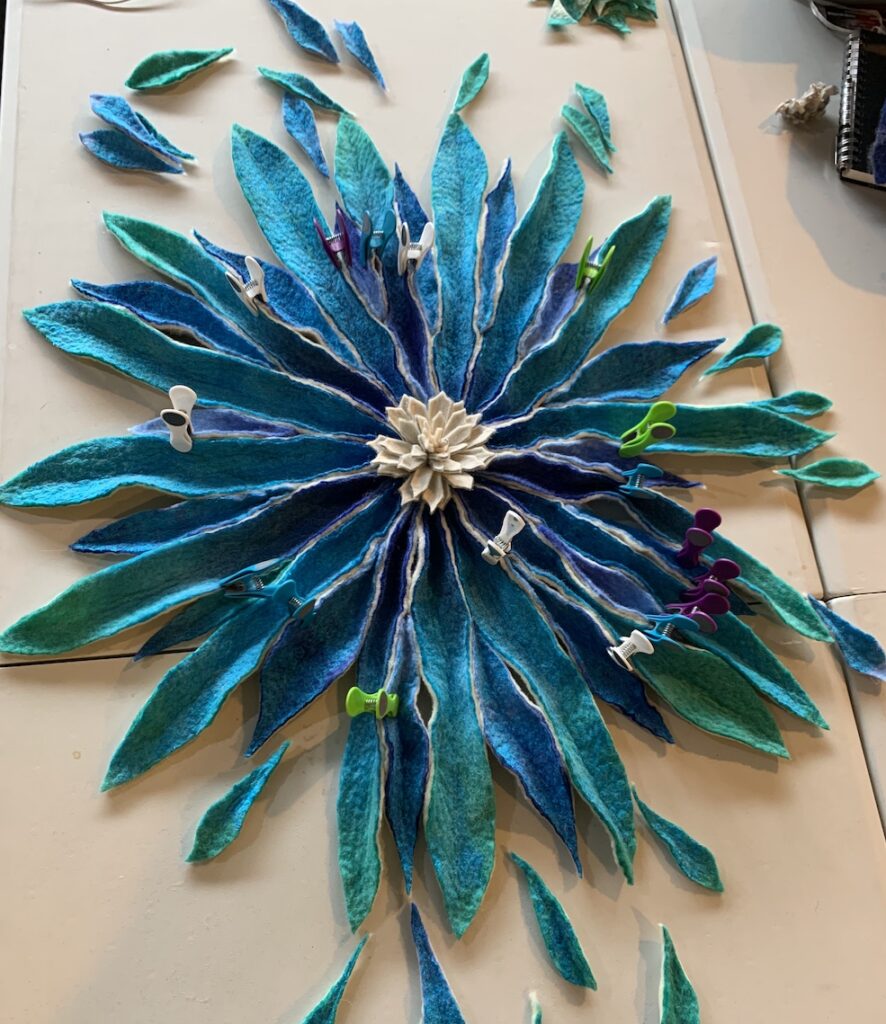
I tried making another central flower in the same blues as the large petals but it didn’t look half as good, it’s funny how some, unplanned, random elements just work together isn’t it? More on the blue flower at the end of this post…
Here is the final piece assembled and hanging on the wall:
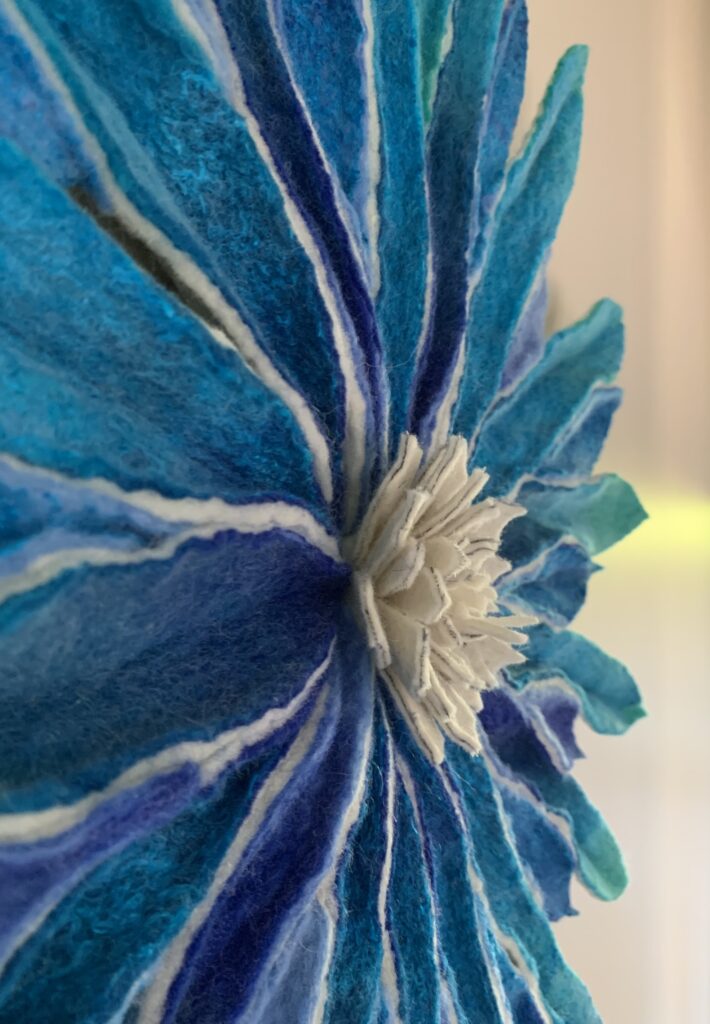
It had been hanging on the wall less than a week before one the fluffy terrorists discovered that, if he jumped really high (4 feet off the ground), he could rip the petals off and add to his collection of toys. So far the hanging has lost 2 petals….
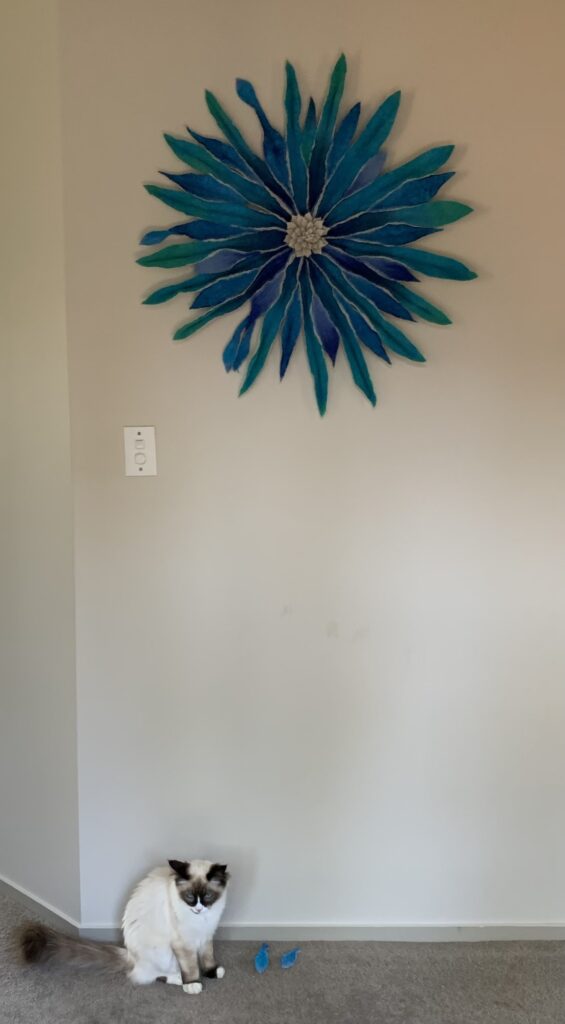
There were quite a few pieces of felt left over after making this hanging so I re-purposed them to enlarge the small blue flower:
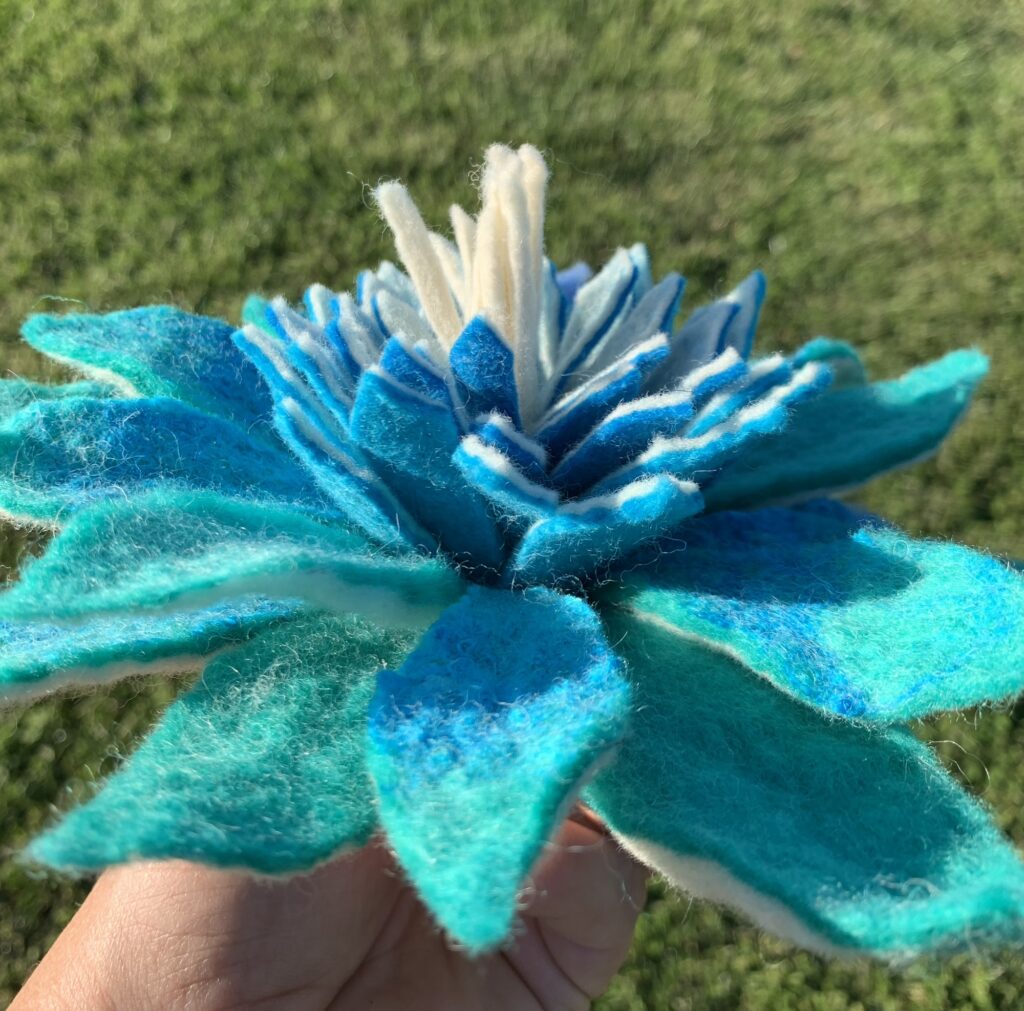
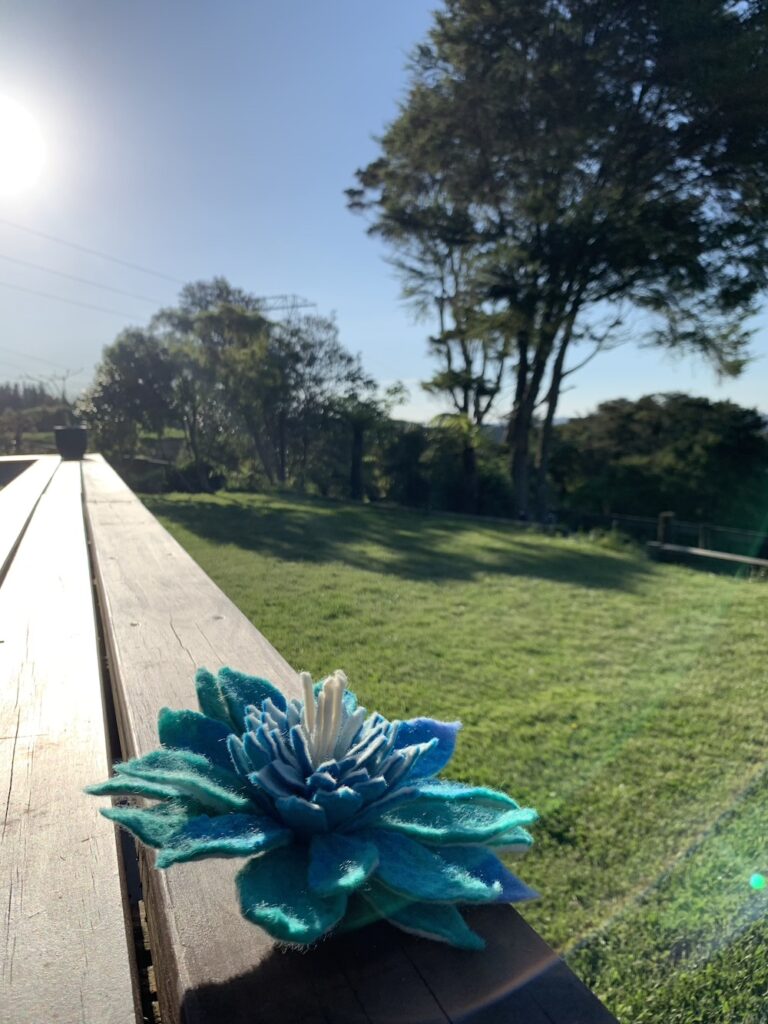
Now I feel inspired to make a whole bunch of these to create an artificial flower bouquet….
Summer has finally arrived here in Auckland, I hope the weather is being kind wherever you are.


